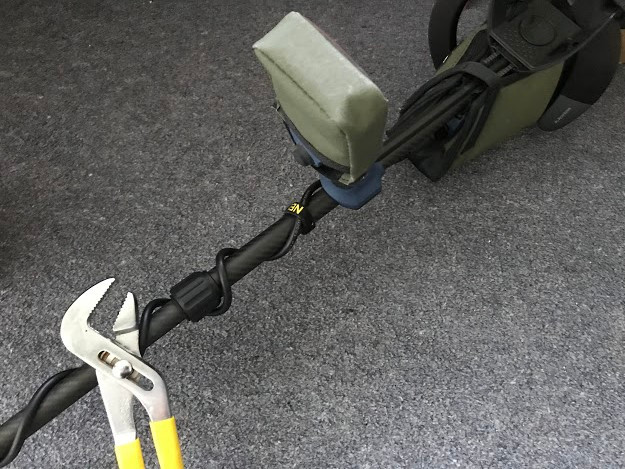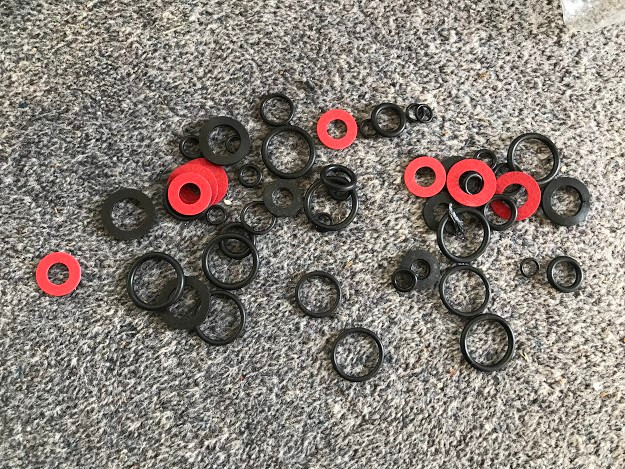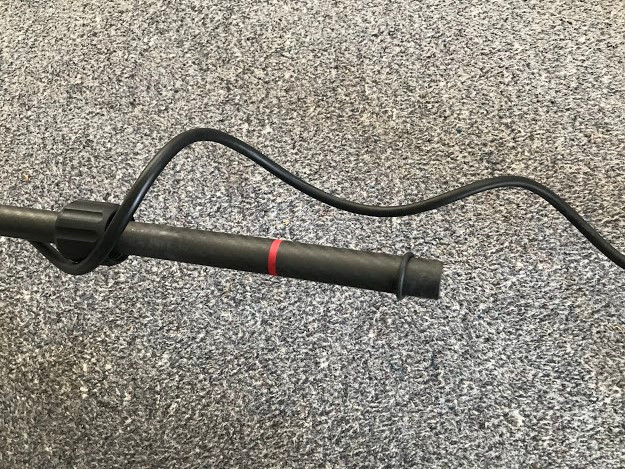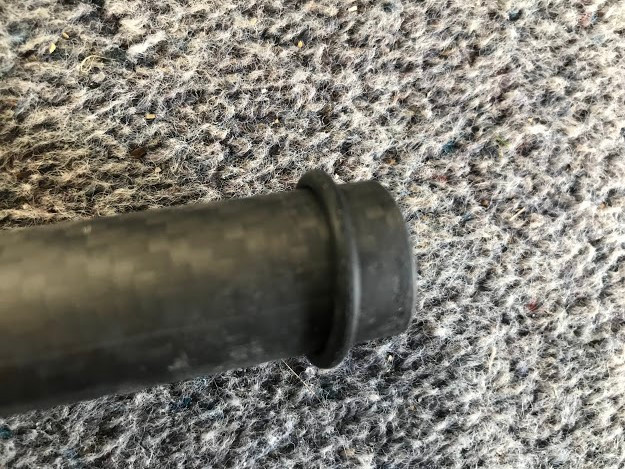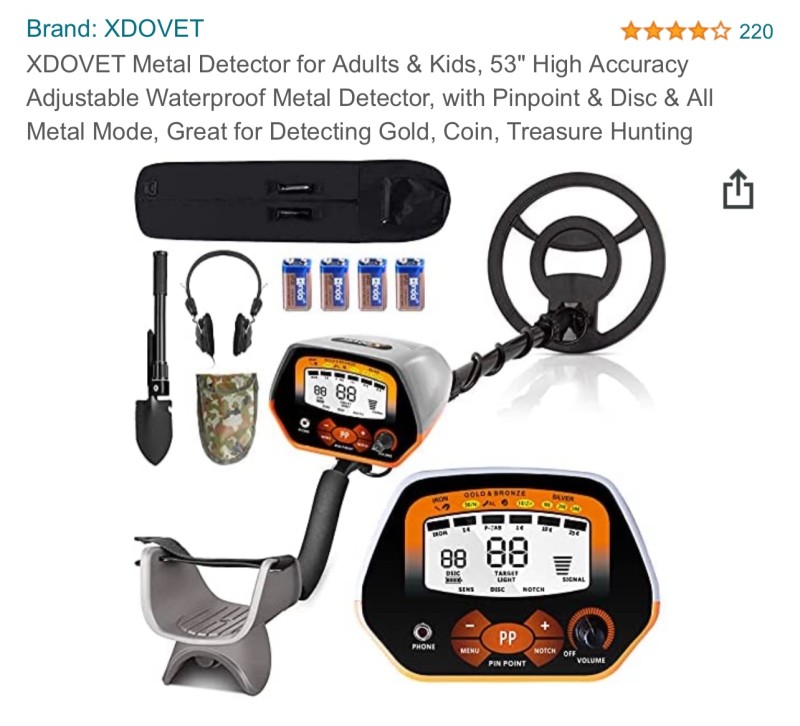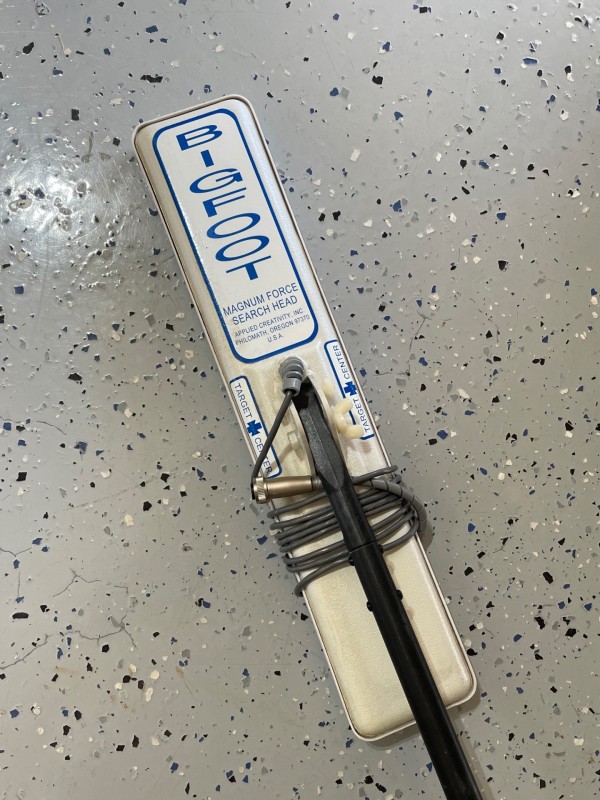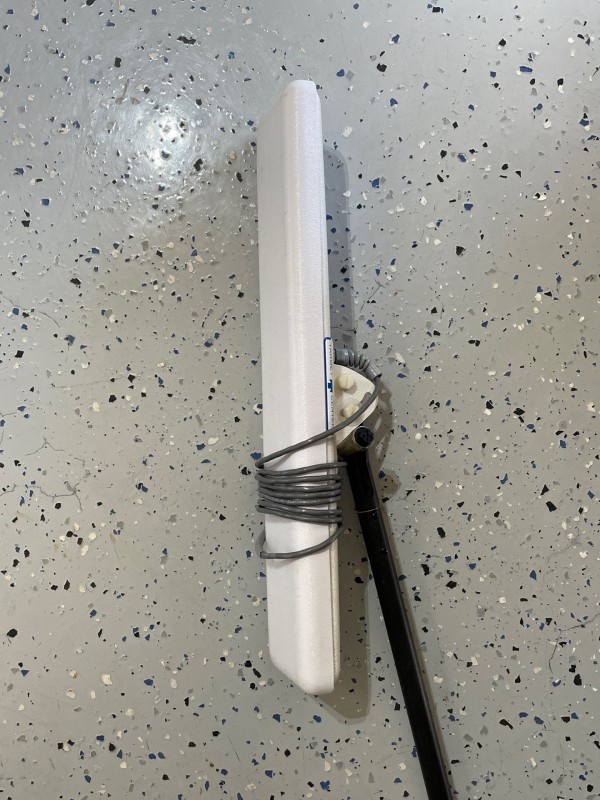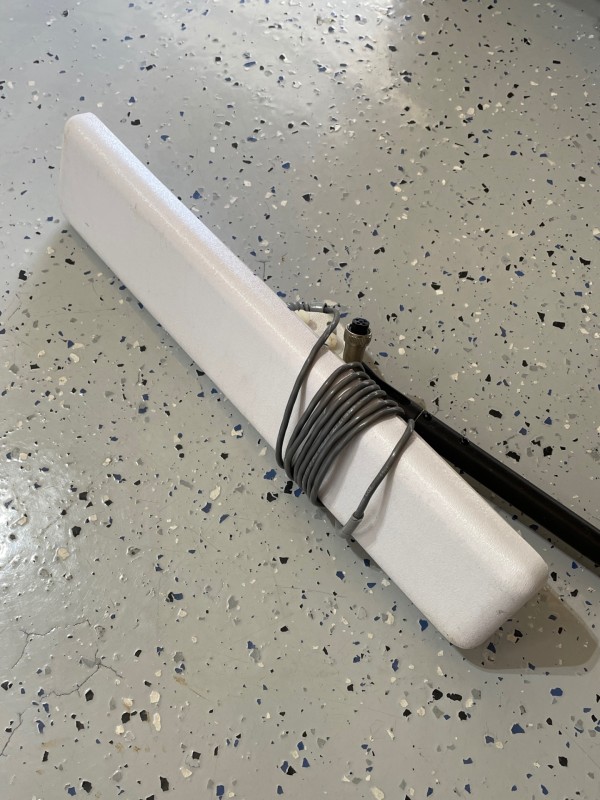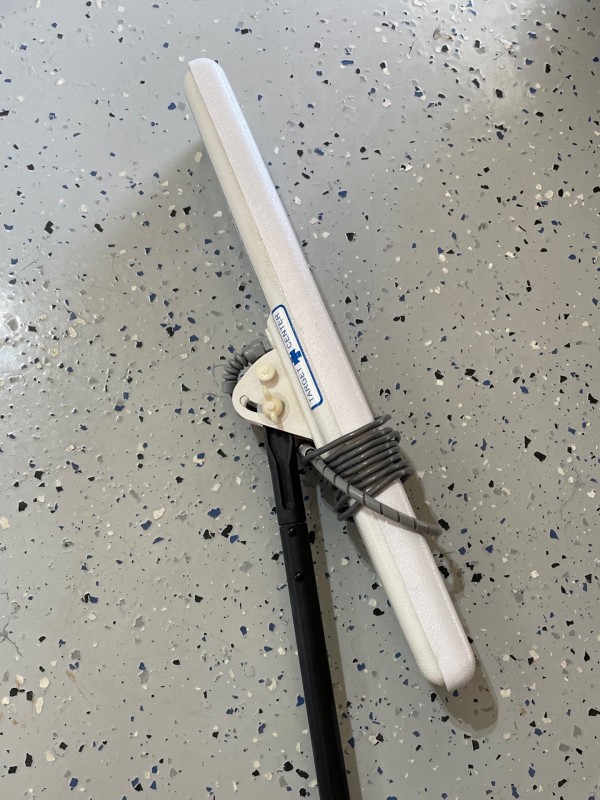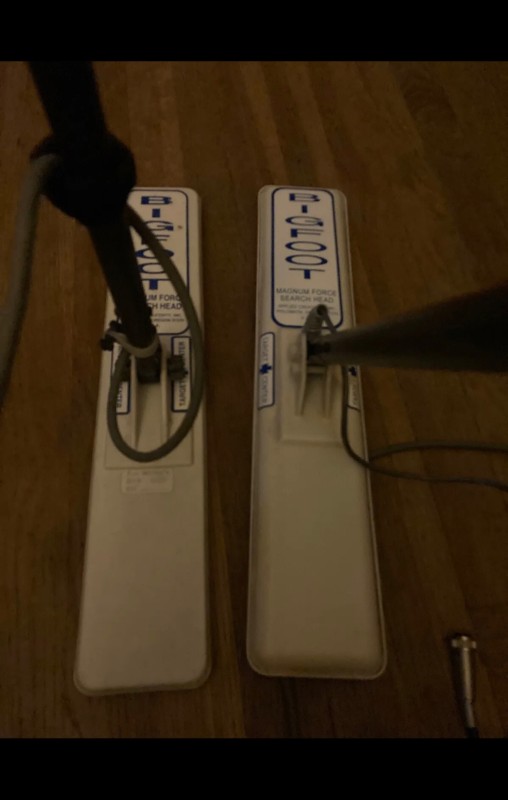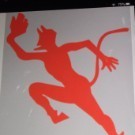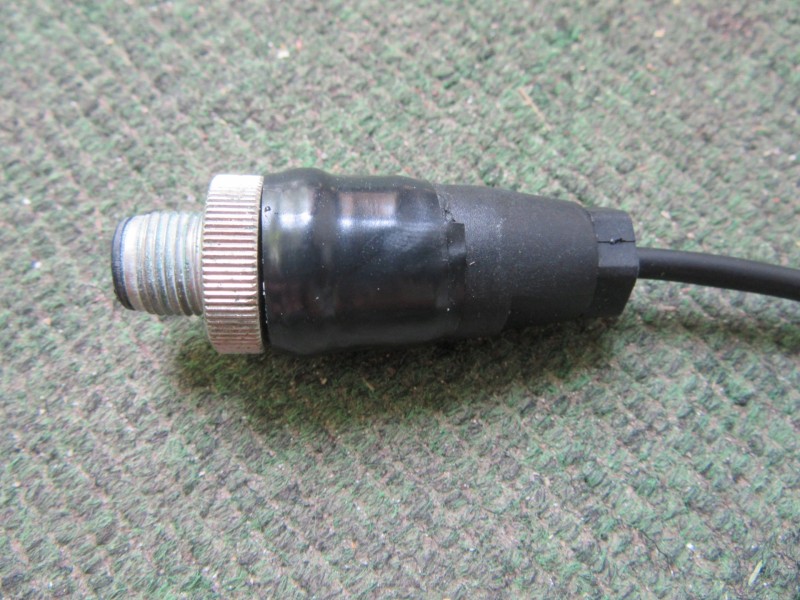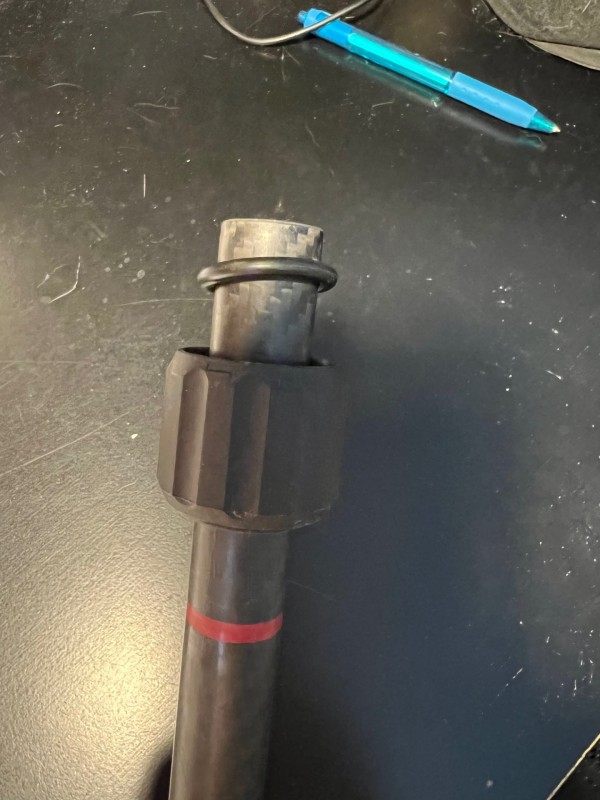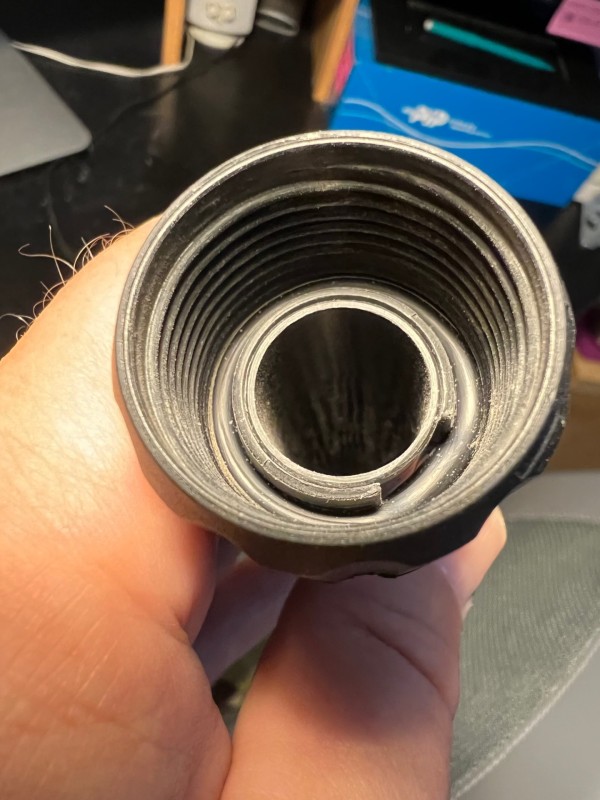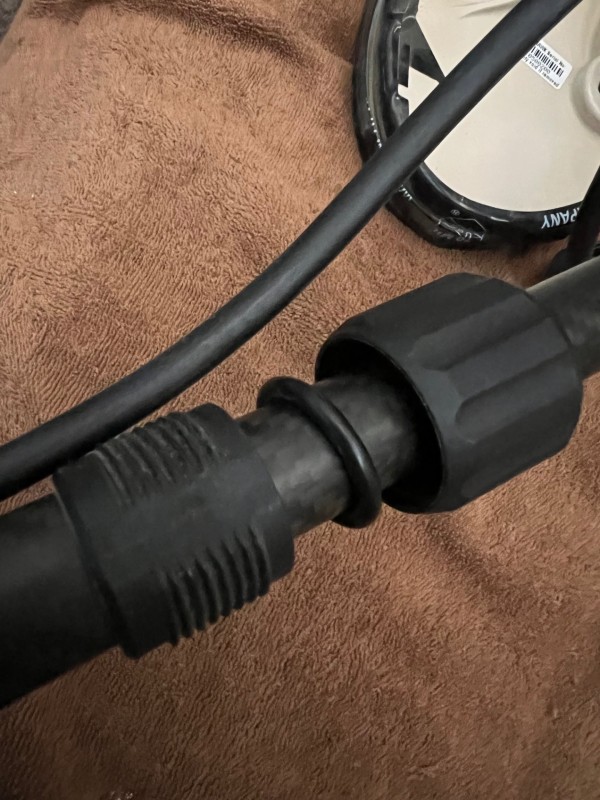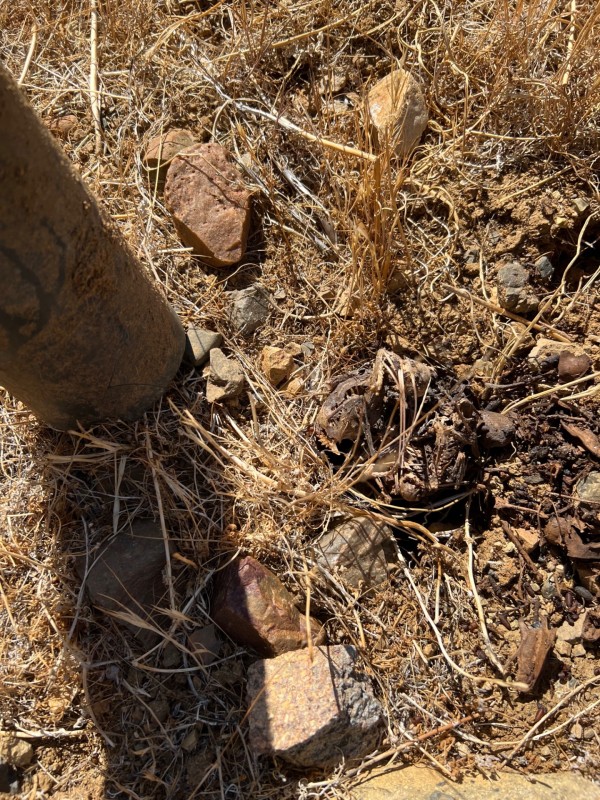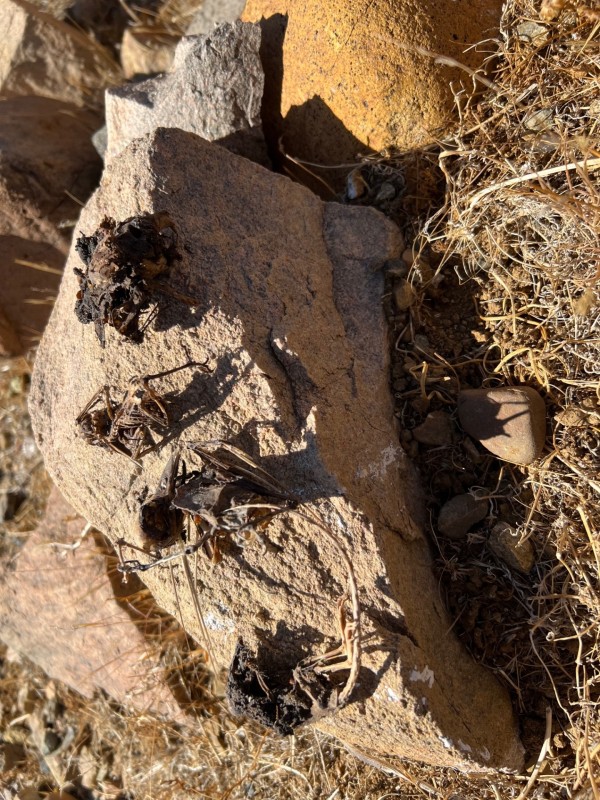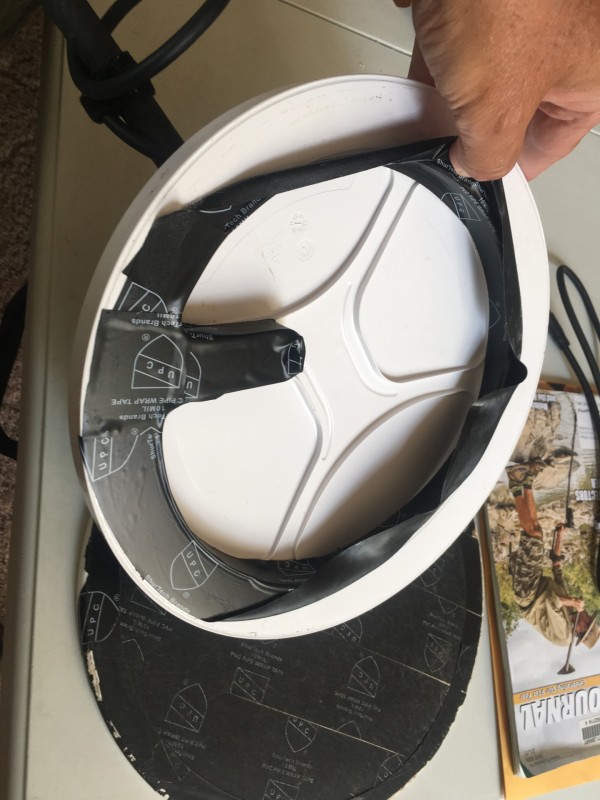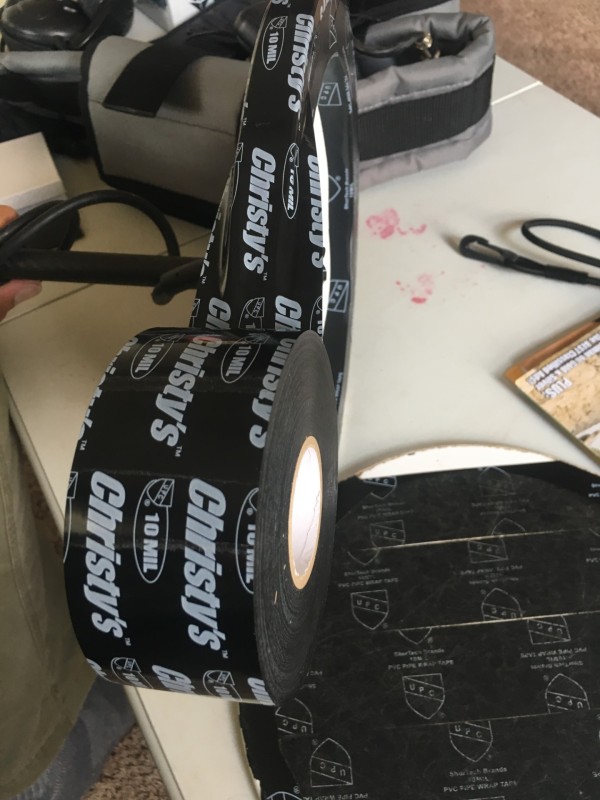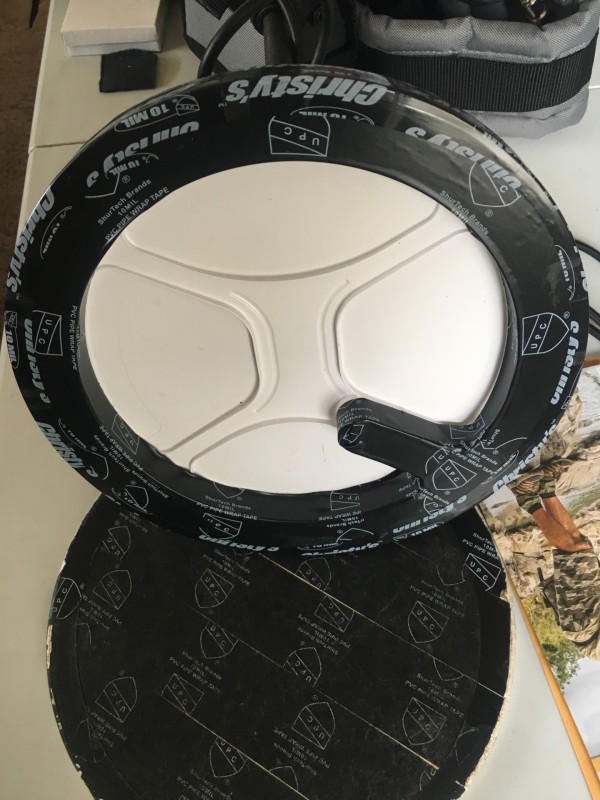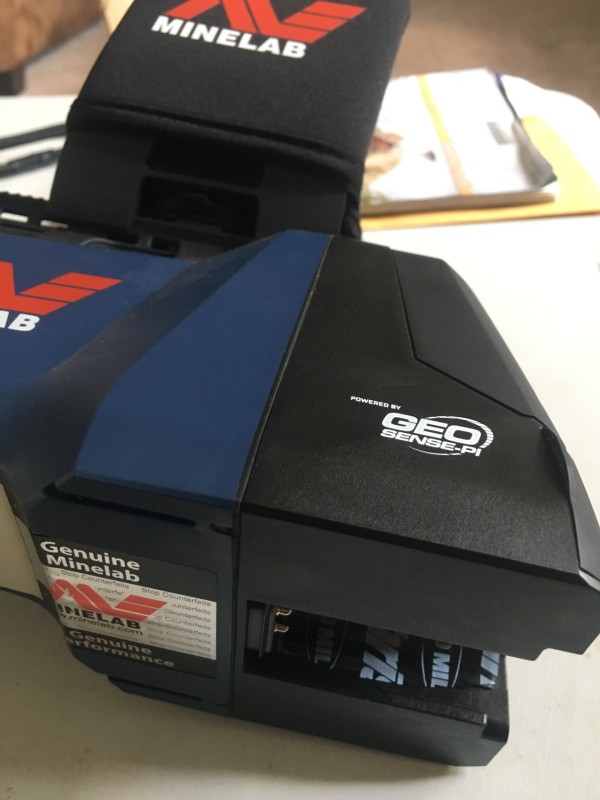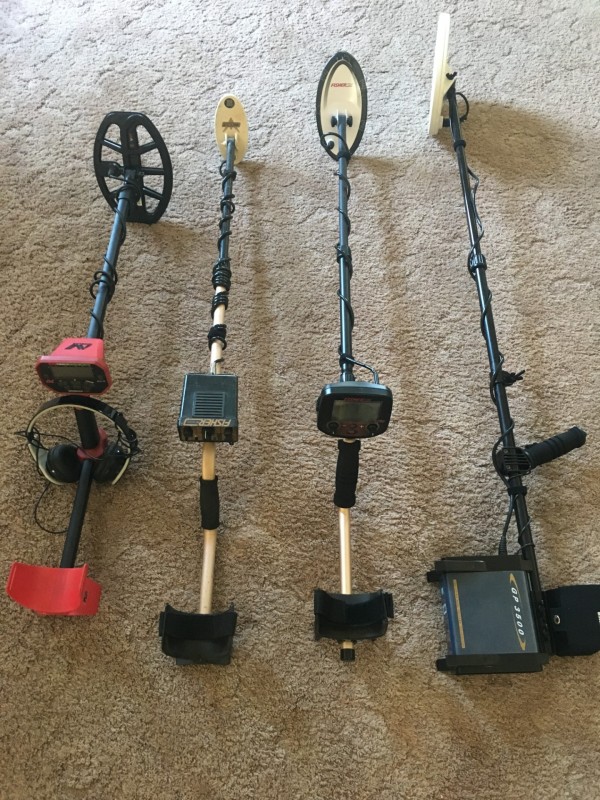Search the Community
Showing results for tags 'advice and tips'.
-
Now that I have aftermarket coils, an EMI fix to allow me to use my speaker and a nice working GPX 6000 there was just one more thing bugging me, the shaft twist. Mine started off good, I was there gloating how mine doesn't twist but that didn't last long, a few times out looking for gold and it was twisting like Chubby Checker with a slight breeze. A while ago GotAU came up with an idea of putting little o-rings in there and he said it worked for him, such a simple cheap solution. I kept meaning to try it and never got around to it, mainly because I had to remember to buy some o-rings and always forgot. Well, I finally got around to it, I bought some and it appears to have worked well, my shaft no longer needs over tightened to make it secure. It got to the point the only way I could prevent it from twisting was to use something like vice grips to tighten it up which I figured would end up breaking it in no time. So, now I've done GotAU's recommended fix and I can say so far it's working fine. For such a cheap price and simple solution it's worth giving it a shot for anyone having a twisting shaft. I didn't bother to measure my shaft, I just bought a multi pack for a couple of bucks You just dismantle the shaft, slide the little O-ring up over the shaft to the position you want to tighten up your shaft then tighten it up, couldn't be more simple. Slide it up over the shaft and into position, a lot further back than this photo obviously. I used ones that were quite small, they were smaller than the shaft but stretched over it. So far so good, thanks GotAU for the great idea, you should be a shaft engineer at Minelab, although you might be over-qualified for the job. The only downside is it's slightly slower to shrink it down as you have to move the o-ring by hand, maybe if I used a looser fitting one I wouldn't need to do that, I'll give it a try sometime, at the moment I'm just happy it's not twisting.
-
as the title reads what do you do when you are detecting an area that is so heavy in Magnetite that none of your detector work the area I am in detecting for gold is this way, the solution I have come up with is to fill five gallon buckets with dirt haul them back home and run them through a small sluice, like the gold fox mini monster, the area has a layer of magnetite down anywhere from 1-5 inches, when you drag a 2 inch rare earth magnet through it the magnet comes back looking like a tennis ball,it is like trying to detect over a iron plate, have found no detector as of yet that will see much deeper the 3-6 inches and the 6 inches is exaggerating it LOL, and that includes a pulse detector that I just recently sold, just thought I would pose this question and get some opinions from the more experienced gold detectorist, every area I have detected here where I live is like this, I have tried the Legend which when you activate the mineralization meter on the Legend it literally pegs the iron particle side of the meter at 10 bars the salt side is reading 3-5 bars, GM 1000, Xterra 705, Whites TDI, Simplex Plus as well as a few others, nothing seems to work, so what do you all do when you encounter an area like I described Thanks for reading
-
Looking for a gold prospecting club in Gold Beach Oregon or someone who knows about Gold Beach prospecting on the beach
-
Hello there, long time forum observer here and thank you to Mr Hershback for this great website. I'm wondering if detectorist really need to have maybe a small advantage in performance and features on high end detector vs the mid range detectors? or even maybe some of the beginner detectors. As in my conclusion by observing information's from this forum (since i didn't have the resources to test out by myself) there are very small difference in performance between the legend, equinox and deus 2. I guess what I'm asking is where/in which scenario the high end detector shines from all other detector to justify the price. Thank you for reading and sorry for my bad English. Happy hunting wherever you at.
-
Hello, looking for some trouble shooting help. I bought this xdovet metal detector (see below) a while back and it has been working just fine, until yesterday. We took it out to a reservoir and we were searching in sand. We always put the settings to find any metal. It beeps when we get close to a large steel object like a picnic table but I threw my keys on the ground and it didn't beep at all but in the past we have found small nails. We put a fresh battery in it, no change. We turned up the sensitivity, no change. It seems like it's not sensing properly but I have no indication as to why. No error messages on the screen. Any thoughts on trouble shooting to fix? Thanks
-
About 2 months ago, I purchased a Nox 800, brand new / open box, for a little over $700. (about a $200 savings) The online seller had 3 or 4 units at that time, and they all sold fast. Before I purchased it, I emailed the seller, and was told it would have the FULL 3 year warranty. So i pulled the trigger, and it arrived a few days latter. Still had the shipping plastic on the keypad, and the screen protectors and cables were unopened. It looked brand spanking new, minus the open box description. I immediantly contacted Minelab reguarding a warranty. Gave them the serial number and registered the warranty I even called the service center, and was assured, that I had a 3 year warranty. Its been a great detector, and Ive certainly put it through its paces over the last few months. It has rewarded me very well, with a large amount of clad, small amount of silver, and 1 gold ring! Ive followed the same seller since then, and watched them acquire and sell yet another batch of similar nox 800 units (new/open box). I wonder where or how, they are able to get ahold of these open boxed machines, that have never had the warranty initiated. Any thoughts?
-
Last night I got in a 4 hour moon lit beach hunt watching the moon disappear into the clouds, fog and Pacific. That is reward by itself without finding much valuable jewelry. This was the 3rd night in a row for me and I'm pretty dialed in right now finding small and deep targets. One was a tiny computer chip and another was an aluminum can bottom at over 20 inches deep. I know metal detecting is like riding a bicycle but if you are a mountain biker or a mountain runner you know that more is generally better. Much of this summer I didn't have a reason to go out more than 3-4 hours a week or less sometimes but now I have been averaging over 20. How many hours a week do you detect?
-
Hi everyone, A few years back, I came across an older Metal Detector at a garage sale and it came with a “Bigfoot Coil” , I thought I’d be using it more often than I was and decided to see how much they cost. After a Google/eBay search, I listed it on eBay for a price that I felt was fair that they were selling for. I ended up finding someone interested in it on eBay and sent it out to them for cheaper than I even had it listed for, as well as paying for the shipping. About a week after he received it, he sends me this message; "I finally have a chance to check out the Bigfoot coil you sent and thought after hooking up to 1 of my 3 DFX detectors that this is not the correct coil as you have listed for DFX. I went in the basement and found my DFX Bigfoot coil I have not used in several years and testing them against one another. You coil has to be for different frequency Whites detectors as it’s different looking upon top of coil and testing with my wedding ring I get a pretty consistent 20-22 VDI which is normal number even with 9 1/2” coil and with Bigfoot coil it shows a VDI number of close to 85 consistent so I would like to receive a return label as this coil you sent is not correctly working for a DFX.” Just wondering if I can get some input from someone that actually knows what he’s talking about 😅 from what I originally saw, it looked like the BigFoot Coil only came in one model? But could there be different types? I’d really hate to pay shipping again and go through all the hassle of returning it and trying to resell it again. Any help or input is appreciated! Attached are pictures of my Bigfoot coil , and the last picture is a pic he sent in comparison to his other one. Thank you in advance!
- 10 replies
-
- whites detector
- advice and tips
-
(and 1 more)
Tagged with:
-
I always found the best way (for me)to understand what the machine is saying is putting it on a lot of targets. Might say I only hunted for the easy stuff. Parks, schools and beaches. So digging a lot of targets to learn the machine. Always been a question to me is how people hunting for the hard stuff like silver in iron infested sites can really get to know their machines. I'm guessing hunting silver in over grown trashy areas sometimes means finding a very few good targets per hunt. Now I understand many hunters take far less time to understand a machine than others. A lot of hunters are still learning a machine even after digging a thousand good targets in the wild. I'm talking clad, jewelry. Going out and digging a thousand silvers or nice relics to me would take for ever to master a machine. On top of that the newer machines are far more complicated. It just seems to me that some can fully evaluate a machine in far, far less time than others. I got to admit I often learn something new every time I go out. So having comparisons with a few machines ( some borrowed ) on a handful of targets (some staged ) and then making a decision is beyond my pay grade. So hats off to the ones out there that are recognized as reliable testers.
-
“Earlier it was mentioned that Garrett dealers would risk their dealer agreement if they sell below a certain amount so do you mean they can sell lower than the suggested retail down to the minimum but going below that puts them at risk or do you mean they can sell below even that price with no risk? 🤔” Price fixing is and has been illegal for a long time. What you pay a person when you are in direct negotiations is up to you and them. Companies can dictate Advertised prices, via Minimum Advertised Price. Violating that by publicly advertising for less can get the dealer canned. It has nothing to do with the price you pay, if you engage in direct unseen negotiations. As I said, simply pressing the buy button on the internet gets you MAP. Calling and negotiating often gets a lower price. There, big secret revealed. Amazing to me how few people in this price obsessed “get a deal” country know this.
-
-
I'm sharing my last experience during the end of a noisy dive... For those that hunts in saltwater like me, can be a gamechanger talking about noise to signals ratio.. I started with too demanding settings in P11, Sens.95 salt sens.8 audio resp.6 react. 0.5 no filters and notch at all, just trying to do the G.B. here and there where rocks sounded with a solid 25... There's no way to obtain a so low balance, so I just left it around 69 and so... After a couple hours of really annoying background noise (already reduced with pitch tones, but still too much for my taste), I just tried before leaving the area to turn the GB tracking... I also had the black sand accepted cause nothing blackish was around me... Miracle😎...All the noise canceled like it was mute and only good pitched signals above the thin audible treshold that even at 20 is still too low to sound over the bubbles and the hood... No gold to show, but some coins and less headache guys😉... Have someone experienced the same?
-
- advice and tips
- underwater detectors
-
(and 1 more)
Tagged with:
-
Here’s a simple fix for the 6000 twisting shaft issue- just put a 1/8th inch thick dry O-Ring inside each of the locking rings. When you twist the locking rings, the o-rings compresses and tightens up between the shaft locking ring and collet keeping the shaft sections from spinning as easily. I used these two sized o-rings (in inches): 13/16 x 1-1/16 x 1/8 3/4 x 1 x 1/8 Fully unscrew each plastic locking ring and separate each rod, leaving the plastic locking rings in place on them and put the o-rings on. Be sure the o-rings fit snuggly but not too tight around each rod as shown below. Then insert the rods back in place and reconnect the threaded locking rings with the o-rings between the two parts. The o-rings will slip between the plastic collets and the ring wall as you screw on the locking ring. When the locking ring gets hand-tight, the o-rings will provide more locking force between the rod sections so they can’t spin as easily.
- 3 replies
-
- rods shafts hardware
- advice and tips
-
(and 1 more)
Tagged with:
-
Note: No lip on dish but he keeps his gold. ....Panning Lesson...
-
Went to the El Paso mtns near Randsburg today to go detecting and found a couple defunct hollow PVC claim markers still standing. Pulled them out of the ground and dead birds fell out. I’m sure the people putting them in never even imagined something like that could happen. If you ever do see them, BLM has approved pulling them out if they are uncapped and hollow, because some have been found with dozens of dead migratory song birds and burrowing owls in them. If you would rather not pull them out, you could fill them up with gravel or rocks, or at least jam a rock into the top to seal it perhaps but if it’s your claim you can’t use hollow pipe anymore for markers, they have to be solid. It was pretty sad finding all those dead birds and even a shrew in them.
-
I have been detecting with the GPX 6000 and other model detectors in creeks and rivers during the hotter summer months. The air pocket under the GPX 6000 skid plate is quite large and makes the coil act like a floating cork. The best solution I found was removing the skid plate and using UPC 2 inch 10mil. pipe wrap on the actual coil thus removing the air pocket when under water. Please see pictures! This tape is extremely scratch resistant and has great stretch ability without leaving much sticky tape residue. I have over a thousand hours detecting with the GPX 6000 using this tape without any damage to the coil. I infrequently only need to add tape to the bottom edges after a lot of coil bumping. The skid plate also fits back over the taped coil edge for when you go back to dry land detecting. I have also used a small amount of this tape to the inside of the battery compartment to tighten the loose seating of the battery. This also has prevented the exclamation warning screen from occurring when the detector is bumped hard enough or dropped. If the exclamation warning is frequent then please send it in to the repair center to be fixed correctly. Also note the accessory armrest covers in the picture. These are item # 3011-0144 Armrest Wear Kit, GPX/Sov/Eureka.-- very comfortable on the GPX 6000. Take a kid detecting. Ron
-
Lots of people are selling their older model detectors for the newer models coming out. I guess it’s like having packrat syndrome, must have the shiny and new. This opens up a good opportunity to get some good detector prices for people on a budget. As a dealer and trainer I get asked a very good question by a lot of customers on what prospecting detector would be best for them. My answer is usually what is your price range and how mineralized is the area you planning on prospecting. If they are new to prospecting and not sure where to even go, I recommend them doing some research on the mining districts closest to them. This is best done by using the online USGS publications site or state geology sites and then by using the MLRS site to see if there is any non-claimed federal ground open to them for prospecting (U.S.A. specific). My usual recommendation for their best chance of finding nuggets is to get a PI detector when in medium to heavy mineralized ground or a VLF with a very good target VDI for low mineralized ground in rubbish littered areas. Usually the PI detectors exceeds there price limit. There are options for used PI detectors at VLF pricing, but this comes with risk by not having any warranty. I recommend only keeping a detector that’s under warranty due to the high price of repairs, but do understand there are some really good prices on used detectors also, such as the GPX-5000. The following list is just a recommendation from my experience using a majority of these detectors on what will work for nugget hunting. I am not saying price always determines the best performance due to many variables in metal detecting. This is not a debate on detector performances as it is more about what price to expect to pay to get into this hobby. All the VLF’s listed here can or should pass the bic pen sensitivity test. There are many more comparable models out there, but these were probably some of the best priced prospecting detectors I have found for the money. Detectors for light mineralization where a VLF can work well: $279,00 Minelab Vanquish 440 w 7 x 10 inch coil Multi Freq. 3 year warranty. lacks ground balance and threshold options. I recommend nugget hunting in Jewelry mode for best sensitivity. Also a multi-purpose detector. $375.00 Fisher Gold Bug newer Digital w 5 inch coil 19Khz. 5 year warranty. $449.00 Fisher F19 w 6 x 10 inch coil package. 19Khz 5 year warranty. $635.00 Nokta/Makro Legend w 6 inch coil package Multi Freq. 3 year warranty. Also a multi-purpose detector. $636.00 Nokta/Makro Gold Kruzer w 4 x 7.5 and 5.5 x 10 inch coil package 61Khz. 3 year warranty. $679 Garrett 24K w 6 x 10 inch coil 48Khz. 2 year warranty. $749.00 Fisher Gold Bug 2 analog or digital w 3 x 6.5 inch coil 71Khz. 5 year warranty. This detector is probably a specialty detector with the most sensitivity for cleaning up the smallest leftover nuggets. If you need more sensitivity then the GB2 then probably recommend the Gold Falcon MD20 pin-pointer 300Khz. $1,078.00 Minelab Equinox 800 w 6 inch coil Multi Freq. 3 year warranty. Also a multi-purpose detector. Very versatile. Many other used VLF models can come in well under $500.00, but with no warranty probably better to buy a new model for the price difference. For medium to heavy mineralization, a PI is really necessary to have the best success: Weight is usually the downside to PI detectors until the last few new releases. So weight is included on the PI list. $2,379.00 Garrett ATX w 11 x 13 inch mono coil Pulse. 2 year warranty. Great price. Weight 5.5 Lbs. $3,399.00 Minelab SDC 2300 w 8 inch mono coil Pulse. 3 year warranty. Weight 5.1 Lbs. The timings with the small 8” coil seems to handle mineralization pretty well. Very small gold capabilities. Has slight warble in threshold. $3,995.00 Garrett Axiom w 7 x 11 inch mono and 11 x 13 inch DD coils Pulse. 2 year warranty. Lowest Weight w 11 inch mono 4.25 Lbs. Great price. Waiting to hear more on the possible heavy mineralization capabilities being talked about. Very small gold capabilities. $3,999.00 Minelab GPX 5000 w 11 inch DD & 12 x 15 inch mono coils Pulse. 3 year warranty. Weight on arm minus battery pack 5.3 Lbs. with 11” coil. To be wireless you need Docs Gold Screamer pack adding some more weight. Good price. Lots to offer for coil sizes & coil configurations. $5,999.00 Minelab GPX 6000 w 11 inch mono & 14 inch DD coils Pulse. 3 year warranty. Weight 4.52 Lbs. w 11 inch mono. Very small gold capabilities. Has unstable warble in threshold using 11 inch mono coils. Headphones do help this situation. Used older Whites and Fisher PI detectors seem to hold a high value, so I usually stay away from paying a premium for them. A used GP 3500 can be found for less than $1,400, ATX for less than $1,500, GPX 4500 for less than $1,700, and GPX 5000 for less than $2,000. Most likely non warranty, but these older PI’s were built pretty solid. Heavy mineralization: $8,499.00 Minelab GPZ 7000 w 14 inch DOD coil ZVT. 3 year warranty. Weight 7.3 Lbs. NF 12 inch coil is preferred or if not worried about losing warranty then x-coils. Very small gold capabilities. Maybe Phrunt, JP, or others can describe the best options in NZ & AUS.
-
Retirement is probably a non-realistic option for most, in reality it's more like work till you die. But for those of you that can move to your dream prospecting area, where would you consider moving too??? I used to live hours away from my nearest mining camps which were located in Eastern Oregon and Southern Idaho, I was able to plan a few trips during the six months that they had road access due to the winter snows, in the end I realized Montana/Colorado/Northeastern Oregon/Alaska/Idaho/Wyoming/High Sierra's were probably not a good place to retire and be able to get out very often detecting, duck hunting was maybe more fit for these locations. These area's do have very remote areas that are spectacular to explore during the fair weather months and have very little people to worry about running into. I decided to try living in Winnemucca, Nevada which was probably a dream location for detecting especially in the late 90's. The changes that happened there were the big mining companies open pit mined a lot of the historical mining areas and the easy road access allowed the rest of the mining camps to get flogged with prospecting detectors. So Arizona has the opposite affect of the northern states, December is wonderful, but the summer heat is brutal, thankfully its not for six months and you can hunt in the mornings. This area has a mix of remote places and some flogged areas nearer to the snow bird camping areas. Definitely a place to consider for retirement detecting. California, hmm!!! why would you move to California, is this not the place where you make your fortune and leave as soon as possible? The southern area is surely overcrowded and has mostly private lands. The Motherload's Sierra foothills have a pretty good year around climate ideal for detecting, a lot less people to contend with and a huge amount of mining districts. The downside is lots of private ownership until you get farther into the higher Sierras', then your dealing with the winter snows as mentioned before. Northern California??? So far this place has a little of everything desirable for a retired detectorist. Lots of mining history, lots of open public lands, considerably less population, year round outdoor weather conditions (close by mountains for in the summer and the valley for when it's colder outside. Remember colder in the northern Sacramento valley is 40 degrees, not even cold if you have lived up north. I took a trip to southern New Mexico and went to Silver City and some other historical mining districts there, absolutely a beautiful place to explore. It also includes a lot of the qualities of northern California. I have not been to NZ, WA or other places like that. Maybe someone from there could better describe the places they have found there dream detecting place. Or maybe they do not want to attract attention to it, which makes good sense to keep it a secret.
-
I don't know exactly where to put this so I'll start here. Maybe Clay has it on his links or someone else has posted it but it got me to some maps I would not have found. I still don't understand most of the nomenclature. https://ngmdb.usgs.gov/mapview/?center=-97,39.6&zoom=4 MapView Betaby the NGMDB MapView lets you explore some of our favorite geologic maps from the NGMDB (USGS/AASG).
- 1 reply
-
- advice and tips
- geology
-
(and 1 more)
Tagged with:
-
Hi all I'm seeking input from the experts to answer an archaeological question about ancient gold recovery. As a geologist, I know the questions I'm asking don't have specific answers but I would value your collective experiences. I'm looking at a situation where gold is recovered from ephemeral streams and where mostly it will be the result of flash floods (and of course before metal detectors made life a bit easier). For those who have worked in these environments, I know the gold distribution can be a lot less predictable than in regular streams. My first question is how effectively gold is separated towards bedrock in such a setting. Can one strip off less prospective sediment and focus on specific bands the way one might in other settings? Secondly, what proportion of the gold will be in particulate form (fine flour and discrete nuggets) versus within composite cobbles with quartz and iron etc (I know primary geology will be a factor here, so assume the sources are numerous quartz veins with gold and associated sulphides). Last, whether anyone has found by detecting a quartz cobble or fragment in a defined stream bed (i.e. not at the base of slope or in gullies) containing gold that is not visible from the outside, and how rare this might be. Any thoughts, observations or questions for clarification will be most welcome. Thanks in advance for your time.
-
The Chinese manufacturers are not only doing clones they're doing mash ups combining features of one model in the look of another. This one is pretty interesting, it looks like a GPZ, combined with a CTX 3030, combined with a normal VLF for functionality and coil design, and includes a full colour touch screen. I like the GPX 4500/5000 arm cuff on a GPZ body. 🙂 It truly is a shame they don't use their talents to make their own detectors, you would think with the clones they can pop out and the skills that they must have to do them they could sit down and build a detector of their own and start a genuine manufacturing company for detectors rather than using other companies ideas. One thing they did do right that Minelab could learn from is getting rid of the weak CTX coil ears and using the GPZ 7000 coil mounting ears on a CTX shaft.
-
I'm completely new to this hobby so I'm looking for used metal detectors to get started. I found a used White's Beach Hunter ID Metal Detector, but it's missing the rod to hold the coil with. I want to use this while snorkeling in the ocean. I have several questions: - Is this a good price for this metal detector? - Is it safe to use in saltwater? If so, how deep can you submerge it? - Is it okay that it is missing a rod? Would it still be easy to use for snorkeling? - What should I do to check it still works when I buy it?
-
For you in a town that has Bus Stop’s and you don’t stop to detect may be passing up treasure beyond your wildest dreams. My father in law got interest in detecting some years ago. His first words was where can I hunt. I told him when he hunts all the bus stops in San Antonio get back with me. He was hunting this one bus stop and moved over just a little beyond it near a clay drain pipe. He got a good signal and the detector said it’s a dollar. He dug down about 6” beside that clay pipe and out pops a 18 something silver dollar. That old boy who put that drain pipe in had to be the one who lost it. Sorry had it been yesterday I couldn’t remember the date. Another time I’d had ask him if he had hunted this major bus stop at this mall. Part of that bus stop was grass but bye the time he got to it the grass was gone . The area to hunt was around 25 X 12 . Later I ask how well did he do . He said he was getting so many signals he just sat on the ground and moving the coil around just holding onto the shaft. He told me he found other coins but had found a little over 13 dollars in Pennie’s. He found rings also around bus stops and I’ve found some myself. You would be surprised at what people lose around them. Just think how many bus stops you pass on the way to work each day. Chuck
-
Can someone tell me how they find places to metal detect for old relics such as coins? Like specific websites, maps, etc.

